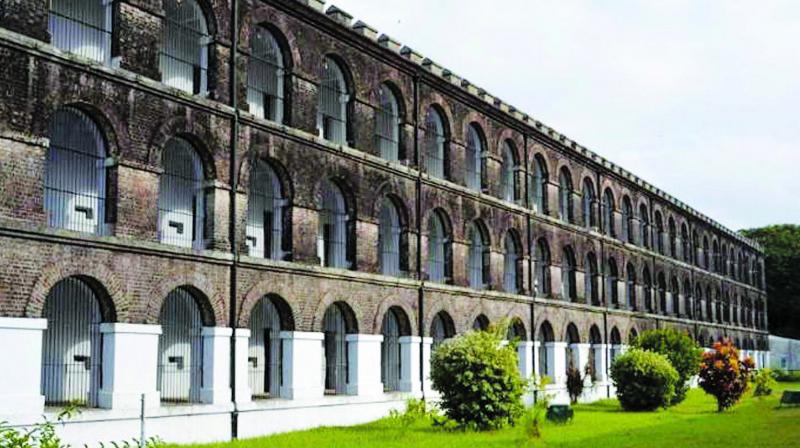History of Cellular Jail
One of India’s worst periods is considered to be Cellular Jail. After the war of 1857, under the Bruisers’ rule, this prison was constructed. The primary goal of building this prison was to subject all Indian freedom warriors who fought for Indian independence to harsh torture.
The prison was established because they wanted to keep the rebellious people from the general public. It is known as the Cellular jail and is situated outside of the nation. On an isolated island, British people have utilized this prison to house political prisoners.
Cellular Jail Location
Within the Andaman and Nicobar Islands‘ limits, Cellular Jail is located in Port Blair. Around this prison, there are many kilometers of the deep sea, all of which are only discernible as seawater. No one found it simple to cross. This jail was famously known because of a notable aspect. The walls of this jail had and extremely thin perimeter . Anyone could easily scale the wall. But on doing so the prisoner would almost surely fall into the water in an attempt to flee He would almost definitely perish.
Cellular Jail Construction Time

The British government required almost ten years, from 1896 to 1906, to build this jail. The construction of the prison began in 1896 AD, and it was finished in 1906. There were 698 cells in this prison, each measuring 15 by 8 feet. The cells were designed with three-meter-high skylights because of this no prisoner could see another prisoner.
Why was it called Black Water Jail or Kala Pani?
“Colonial jail” status was once held by Cellular Prison also known as “Kala Pani” or “black water jail.” The prison is encircled by water on all sides, the inmates were unable to find a way to elude capture.
During the Indian freedom fight, the British mostly used Cellular Jail to exile political prisoners to a far-off country. In 1942, during World War II, Japanese soldiers later took control of this prison.
A National Museum

One of the most important prisons in Asia has long been regarded as The Cellular Jail. Currently, this location draws tourists as a well-known national landmark. The designation “National Memorial” is awarded to it. The intriguing museum that depicts jail life and the difficulties of well-known political prisoners in India is the location’s main draw.
Cruel treatment of Britishers

To punish inmates for their crimes, there are several jails around the globe. One of the cruelest prisons in the world is Cellular Jail. The prison tells the story of how cruelly the British handled the political prisoners from India. The British have a policy of punishing captives with black water.
Construction

There is a total of 696 small-sized cells in this prison. It is a three-storied Jail with seven branches. The size of every cell comprises 2.7 meters to 4.5 meters. There is no bedroom present in jail. The primary building is made up of red stones that were acquired from Burma. This type of construction resembled a wheel of the bicycle where each of the wings is connected with the central tower as the “spoke of the wheel”.
Also Read – Why We ‘hoist’ The Flag On August 15 But Unfurl’ It On January 26
About the Life of Prisoners

No prisoner is allowed to interact with or observe other prisoners because to the nature of the jail. They were separated from one another. Inmates in different cells could not communicate with each other. The Savarkar brothers Veer Vinayak Damodar Savarkar and Babarao Savarkar were given adjacent cells at the jail, but they were not aware that they were being held in the same jail for about two years throughout their time there.
Freedom Fighters who remained in Jail
The prison housed a number of notable Indian freedom fighters who took part in the historic Indian liberation movement. Among them are the well-known Veer Savarkar, Yogeshwar Shukla, Vinayak Damodar Savarkar, and Batukeshwar Dutt. The 200 rebels who arrived first in this jail were there to guard David Berry and the jailer, Major James Pattison Walker. From Karachi, about 733 independence fighters were transported.
Also Read – Gulab Kaur: A Sikh Woman From The Philippines Who Fought For India’s Independence
Unique Design of Cellular Jail, Andaman

The Cellular Jail’s entire building has seven straight wings connected to a central tower. Jeremy Bentham, an English philosopher and social critic, developed the Panopticon concept, which served as the basis for this prison’s construction. The prison is shaped like an octopus. The jailor used to build a tower in the middle of the prison to keep an eye on the inmates. The convicts, however, could not be aware that anyone is watching them.
Also Read – Why In 1946 The British Decided To Leave India?



